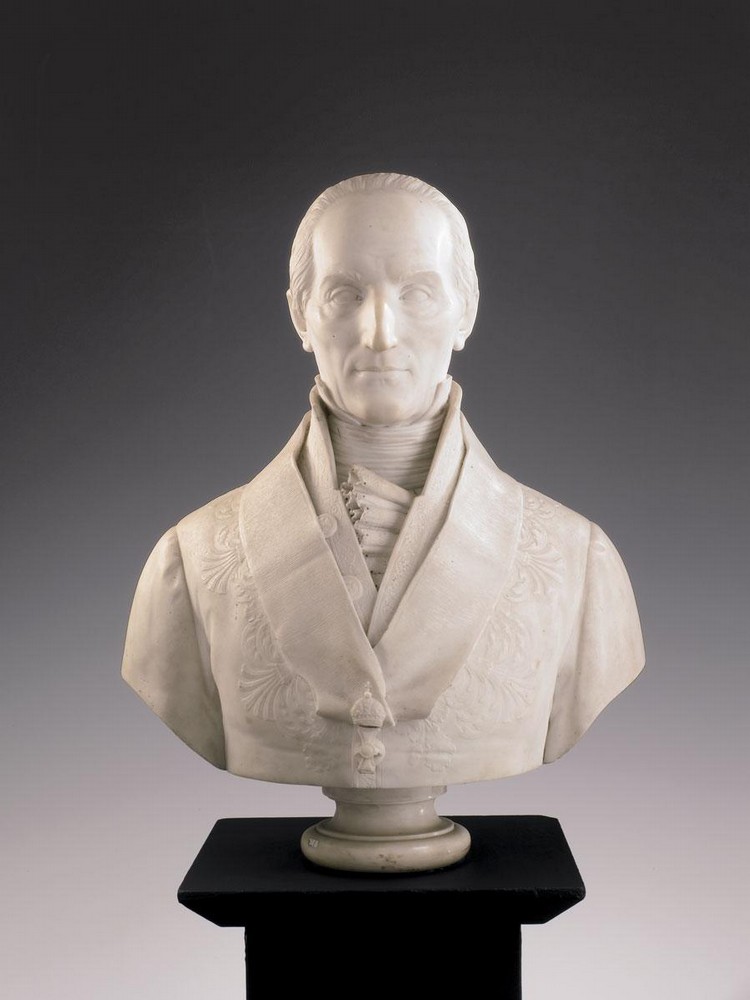Luigi Zandomeneghi
SCULPTOR
Born in Verona on 20 February 1778 in the municipality of Colognola ai Colli, Luigi Zandomeneghi was a skilful sculptor, prolific and academically inclined, so much so that he is considered the most important sculptor in the Veneto region in the first half of the 19th century.
Thanks to the good economic conditions of his family, Luigi had the opportunity to study painting, literature and mechanics.
He began his studies at the Venetian workshop of Bernardi Giovanni known as Torretti, the same place where Antonio Canova also trained. Of the latter, Zandomeneghi was a constant follower and faithful imitator, so much so that he joined him in Rome.
Later, Zandomeneghi returned to Venice, where he concentrated much of his activity. Here he produced numerous important works and became a point of reference for many skilled sculptors linked to the Canova school. From 1819, he also began teaching at the Accademia di Belle Arti in Venice. Among his major works is the design of Canova's mausoleum, realised in 1827 in collaboration with Antonio Bosa, Giuseppe Fabris and Rinaldo Rinaldi. The mausoleum has a pyramidal structure on a stepped base, decorated with statues representing the Arts, the Lion of St. Mark and Genius. Inside, in a porphyry vase, is preserved Canova's heart.
Some of the Venetian works were created in collaboration with Canova's pupils Bosa, Fabris, Bartolomeo Ferrari and Antonio Giaccarelli.
In addition to Venice, Zandomeneghi was active in Padua - where, for the neoclassical flat in Palazzo Papafava, he created large high-reliefs narrating Homeric episodes -, in Bassano del Grappa - where, in the Civic Museum, his marble statue Homage to Antonio Canova, dated 1827, is preserved - in Castelfranco Veneto - a city in whose Church of Santa Maria in Pieve there are his statues of Mary and St. John -, in Trieste - where his sculptural fastigium, which adorns the façade of the Palazzo del Tergesteo, is located - and again in Udine - where he executed a bas-relief in the cemetery of San Vito -.
Zandomeneghi married Maria Ghislanzoni in 1805, and had eight children, among them Andrea and Pietro, his pupils and collaborators who also became sculptors and assisted their father in the realisation of another Venetian work: the majestic and academic marble monument in honour of Titian, commissioned by Emperor Ferdinand I and also erected in the Basilica dei Frari, where the great painter would actually be buried. At the centre of the monument stands the statue of Titian, surrounded by symbolic figures, while in the background are three of the master's works in relief: the torture of St. Lawrence, St. Peter the Martyr and the Assumption. The work totally absorbed the last years of the artist's activity -although he was always engaged in the Accademia and in the setting up of the Archaeological Museum in the Doge's Palace-, and, after various vicissitudes due to changes of government and his precarious health, the monument was completed by his sons after his death in Venice in 1852.
